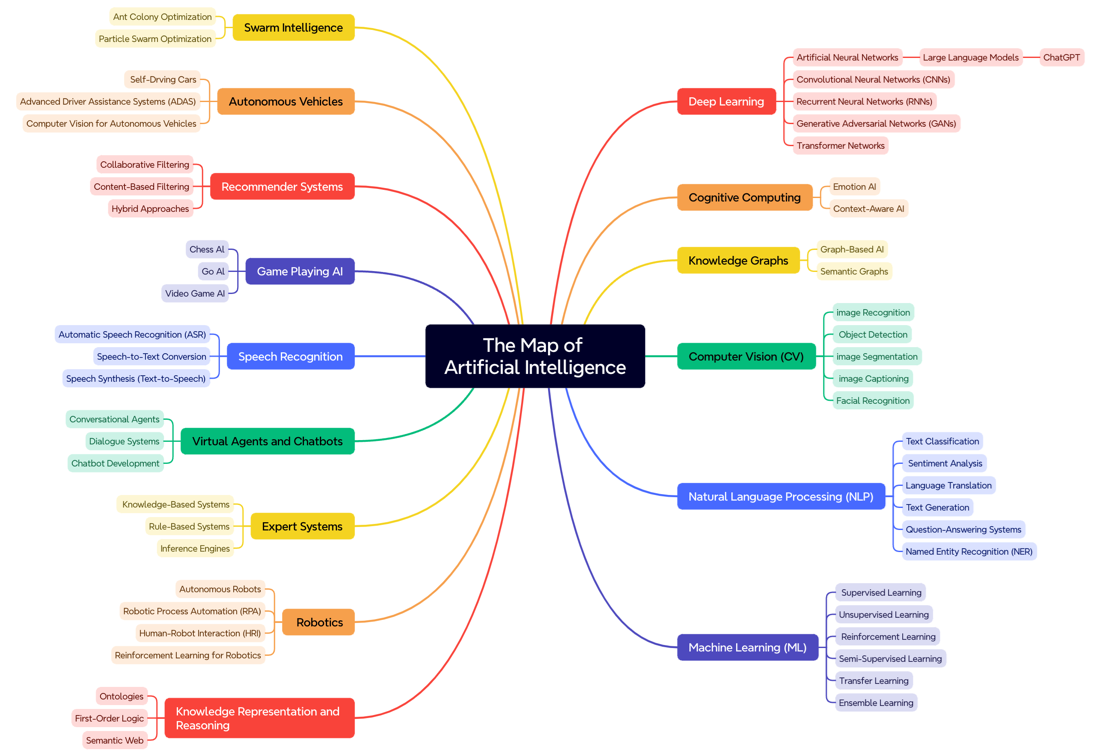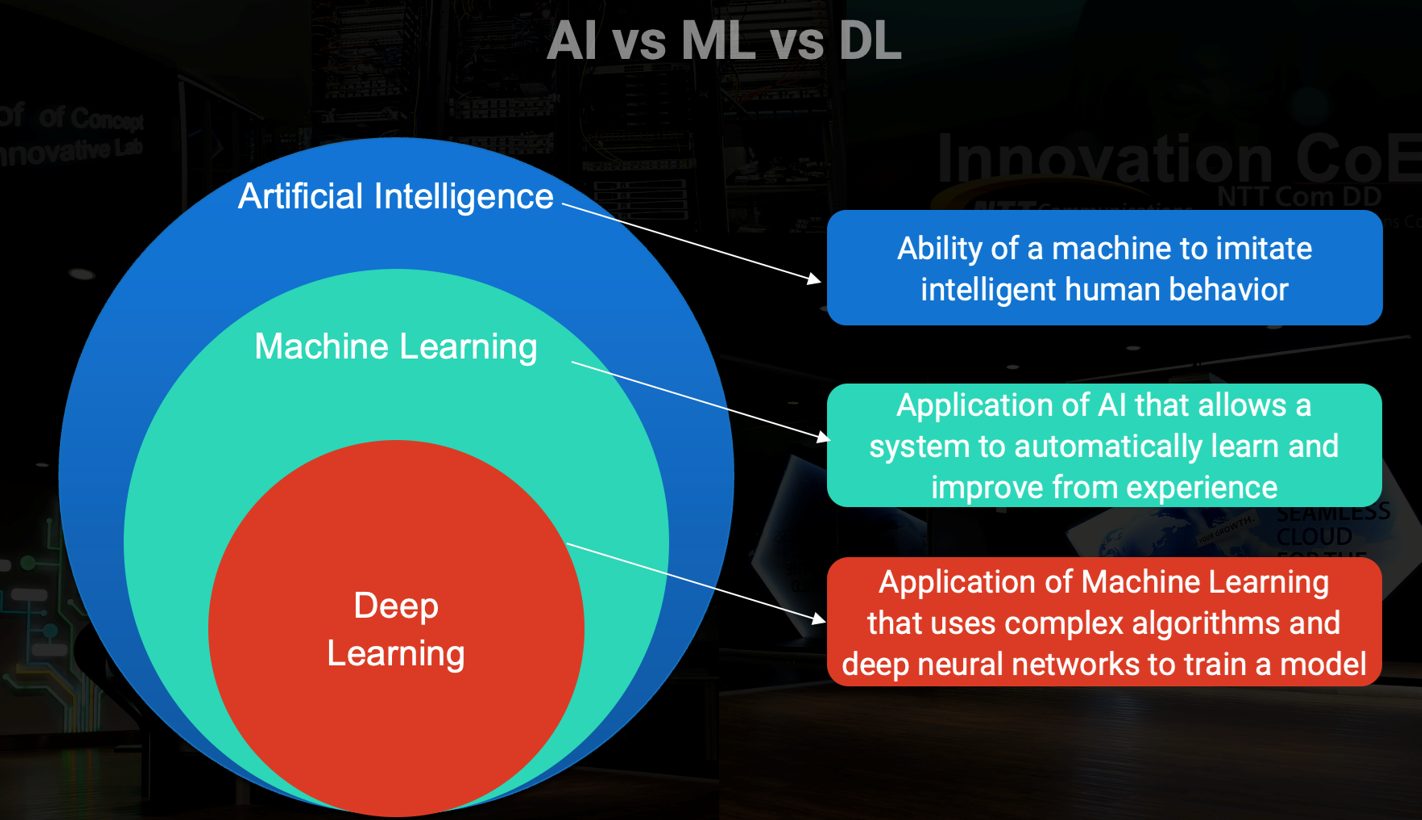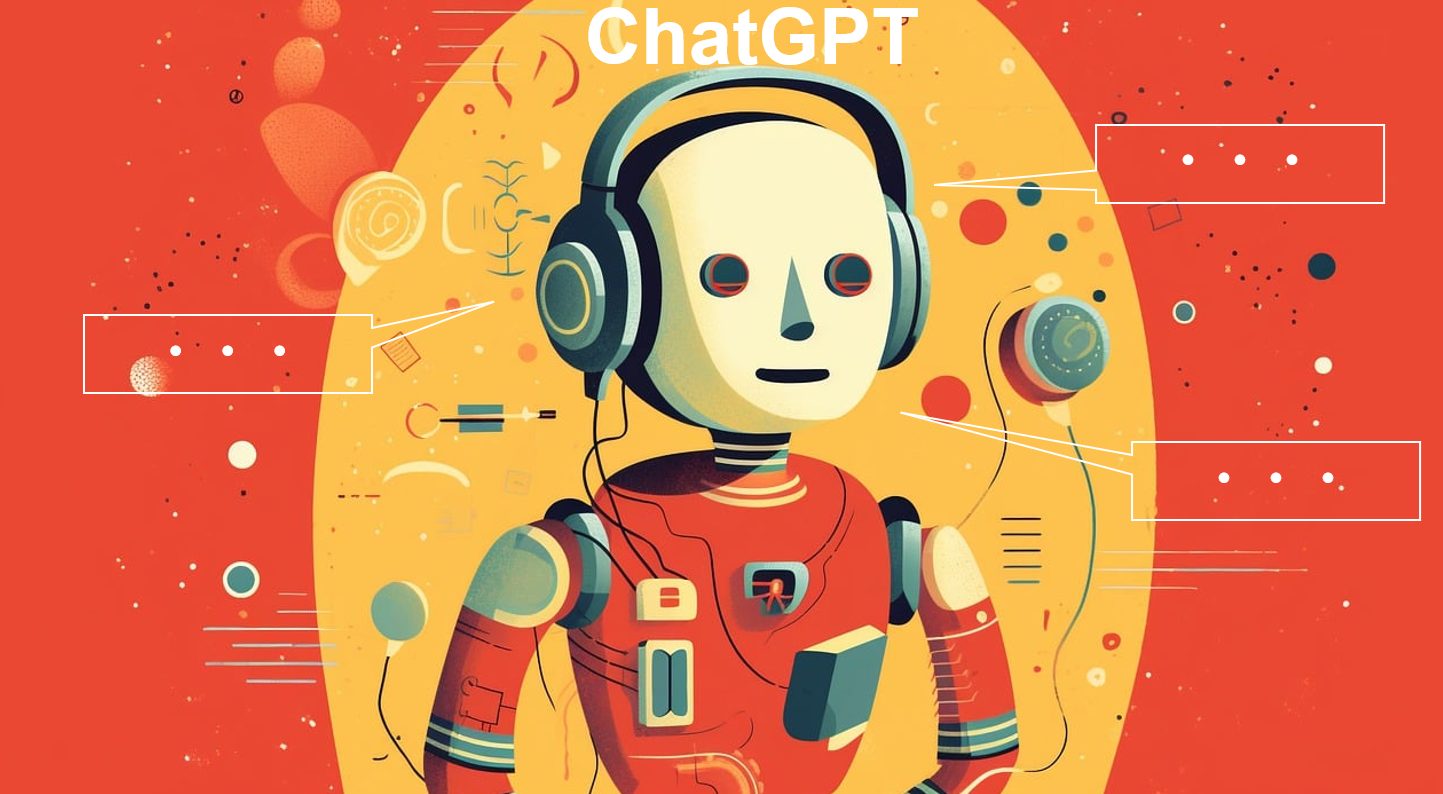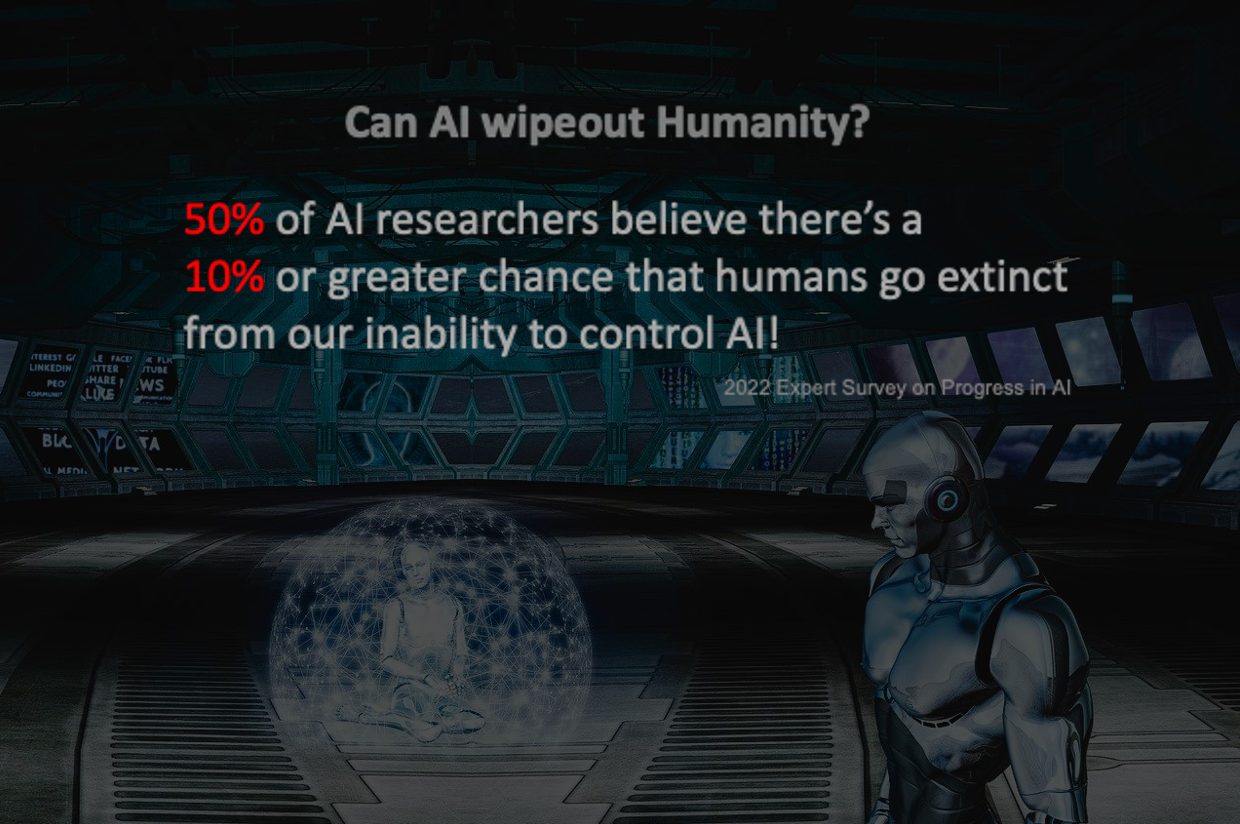What is AI (Artificial Intelligent)?
AI has become an essential part of our everyday life! From face ID on your phone to self-driving cars,
AI is rapidly transforming our everyday life and changing our world. With AI, you will never trust your eyes or ears anymore
as our presenter who is not a native Japanese speaker could speak perfect Japanese by using a Video AI software.
AI Presenter generated from a Video AI software speaking perfect Japanese
Demystifying AI
Artificial Intelligence is the capacity given by humans to machines to memorize and learn from experience,
to think and create, to speak, to judge and make decisions on their own autonomously. Unlike traditional programming,
where each step is explicitly defined, AI systems can adapt and improve their performance based on data. This ability to
continuously learn and evolve is what makes AI so powerful.
In short, AI (Artificial Intelligence) is the concept of creating smart intelligent machines.
AI has been around for decades, but recent advancements in machine learning and deep learning have made it a
powerful tool with the potential to revolutionize many aspects of our lives.
Categories of AI
As the popularity of “ChatGPT” grew in the past few months, people started to think that “AI is ChatGPT!”.
But it is not! “𝗖𝗵𝗮𝘁𝗚𝗣𝗧” is a type of “Deep Learning” known as “Generative AI” which we will cover in more details later.
As you can see from the map below, the field of AI is much much larger.

From the diagram above, we would be able to know that there are many other large fields of Artificial Intelligence in the
market today together with some examples on the products using those related AI, such as: 𝗡𝗮𝘁𝘂𝗿𝗮𝗹 𝗟𝗮𝗻𝗴𝘂𝗮𝗴𝗲 𝗣𝗿𝗼𝗰𝗲𝘀𝘀𝗶𝗻𝗴,
𝗖𝗼𝗺𝗽𝘂𝘁𝗲𝗿 𝗩𝗶𝘀𝗶𝗼𝗻, Robotics, Speech Recognition, Autonomous Vehicles and so on.
AI vs ML (Machine Learning) vs DL (Deep Learning): A Spectrum of Intelligence
AI is a broad umbrella term encompassing various approaches to achieving machine intelligence.
There are many categories of Artificial Intelligence in the market! Before we look at it in more details, technically there are
3 major categories of AI namely “General AI”, “Machine Learning” and “Deep Learning”, depending on the complexity of the
AI logic involved and the level of Intelligence that they possess as shown in the diagram below:

As mentioned previously, “AI” is a broad term that refers to the ability of a machine to imitate intelligent human behaviours.
There are two other important subfields to further granularize the complexity of the AI and they are machine learning (ML)
and deep learning (DL):
Machine Learning (ML): Machine Learning is a subset of artificial intelligence that helps you build AI-driven applications
by learning on its own based on the logics that have been programmed onto it. Imagine showing a child thousands of pictures of dogs until they can identify a dog on their own. That’s the essence of machine learning.
Deep Learning (DL): Deep Learning is a very advanced type of machine learning that uses vast volumes of data and complex
algorithms to train a model. It is inspired by the structure and function of the human brain. Deep learning algorithms use
artificial neural networks, layered networks of interconnected nodes, to process information and make increasingly accurate
predictions.
In summary, AI is a broad field, and machine learning (ML) and deep learning (DL) are two important subfields.
Machine learning algorithms can learn from data without being explicitly programmed. Deep learning algorithms are a type of
machine learning that uses artificial neural networks to model complex relationships in data.
What is Generative AI?
Another term that has become very popular lately is Generative AI. Generative AI is a broad field of AI that includes
algorithms that can “generate” new contents, such as text, images, music and videos. For example,
ChatGPT is a specific implementation of generative AI that uses a “transformer” model to produce human-like text.
Transformer model focuses on the order of the data (such as the order of words in a sentence) and the context in which data points occur. They’re especially good at understanding and generating human language.
Generative AI can be used for a variety of purposes, such as creating realistic simulations or generating creative contents.
This technology has the potential to revolutionize various creative industries. Imagine an AI that can compose music tailored
to your mood or produce a Holywood Blockbuster without using any videography equipment.

The Threats of AI to Humanity
AI (Artificial Intelligence) is a double-edge sword, as with many things in life!
While ChatGPT is primarily used to help us becoming more productive where anyone without any IT knowledge would be able
to use it to make our job easier but now with “WormGPT”, ChatGPT’s malicious cousin, everyone can become a hacker,
even if you don’t know how to code! With “WormGPT”, technically, everything that the “Blackhat” underground hacker
community can do can be done by using WormGPT! So, we have to use it responsibly to make this world a better place to live in and not the other way around!
Another threat AI has introduced to humanity is the worry of job displacement. Will AI take over our job one day? Well,
to certain extent it has started to do that! As AI automates tasks, job losses in certain sectors are inevitable.
However, AI is also likely to create new job opportunities in areas like AI development, data analysis,
and human-AI collaboration.
Last but not least, some experts, like Elon Musk, have expressed concerns about the potential dangers of AI,
such as the possibility of AI systems becoming so intelligent that they surpass human control. These concerns are often
referred to as “existential risks” from AI. While this scenario might seem like science fiction, careful consideration of potential risks is vital.
According to an “Expert Survey on Progress in AI” done in 2022, 50% of AI researchers believe there’s a 10% or greater
chance that humans will go extinct from our inability to control AI! 
“Deeper” look at AI – ANI vs AGI vs ASI
To gain some level of understanding on how the above concern on “existential risks” could potentially become a reality further
down the road, let’s dive even deeper into the various levels of AI. When discussing AI, it’s important to distinguish between different levels of intelligence it possesses, the industries have further broken AI down into 3 main levels and they are:
- Artificial Narrow Intelligence (ANI): This is the type of AI we have today. It’s good at specific tasks
but lacks general intelligence. ANI excels at specific tasks, like playing chess or recognizing faces,
but lacks general intelligence. - Artificial General Intelligence (AGI): This hypothetical type of AI would possess human-level intelligence,
capable of understanding and learning any intellectual task that a human can. In short,
it would be as intelligent as a human being. - Artificial Super Intelligence (ASI): This even more hypothetical level of AI would surpass human intelligence in all aspects.
In short, it would be more intelligent than any human being.
While the development of AGI and ASI is uncertain, considering the ethical implications of such powerful intelligence is
essential.
Monetizing AI
Life is full of unknowns, instead of worrying about the future, which might or might not happen,
why not we try to understand AI better and see how we can take advantage of it to increase productivities or even helping us
to drive more revenue in our business. AI has the potential to be a major driver of economic growth. For example,
it can be used to automate tasks, improve decision-making, and develop new products and services.
In the area of business, how could we leverage on AI to help our customers as well as increase our business revenues?
There are a few ways we can do it. Let’s explore each one of them in details:
1. Products with AI embedded
A lot of products and solutions in the market today have AI embedded to increase the values of their products.
In NTT Com DD, we have been promoting the AI features of those products and solutions to our customers to help them take advantage of AI. Here are some of the examples of the products that we have been selling that have AI embedded:
- Cisco DNA Assurance and AppDynamics with AI-based automated RCA (root-cause analysis)
- Cisco ThousandEyes with AI WAN Insights
- Cisco Viptela with AI Analytics
- Google CCAI with Natural Language Processing
- Tufin SecureTrack with AI Policy Optimizations
- Cloudflare Area 1 Email Security with AI pre-attack analytics/NLP
2. Standalone AI Platform
Apart from that, we can also position some of the standalone LLM (Large Large Model) Generative AI products to our clients
to help solve the business & operation challenges they might be facing in different areas of their business such as using
AI-powered automation to streamline processes, reduce costs, and increase efficiency across their business operations.
Some of the popular AI platforms in this category include:
- Microsoft Co-Pilot
- Google Gemini
- Open AI GPT 4.0 with ChatGPT
3. AI Consulting and Professional Services
We could provide consulting service to our customers by showing how AI can analyze vast amounts of data obtained through
running AI applications to identify patterns and generate insights to improve decision-making.
We could also offer professional services by helping or coaching our customers on how their organization could embark on IT
Infra Automation by reducing the learning curve using AI to help write some Python scripts / Ansible Playbook if needs be
to achieve a particular business outcome, so that minimum coding knowledge is needed.
Summary
AI is a powerful tool with immense potential to both benefit and harm humanity. By acknowledging both the potential
benefits and risks and carefully considering the ethical implications of AI as we develop and deploy this technology,
we can ensure that it is used for good. Here are some key considerations:
- Transparency and accountability: AI systems should be transparent in their decision-making processes,
and developers should be accountable for potential biases. - Regulation and ethics: Clear guidelines and regulations are needed to ensure the ethical development and deployment of AI.
- Human-AI collaboration: The future of work likely involves humans and AI working together,
leveraging each other’s strengths.
In conclusion, AI is here to stay. By embracing AI responsibly, we can usher in a future where this technology empowers us
to solve some of humanity’s most pressing challenges and create a brighter future for all.





